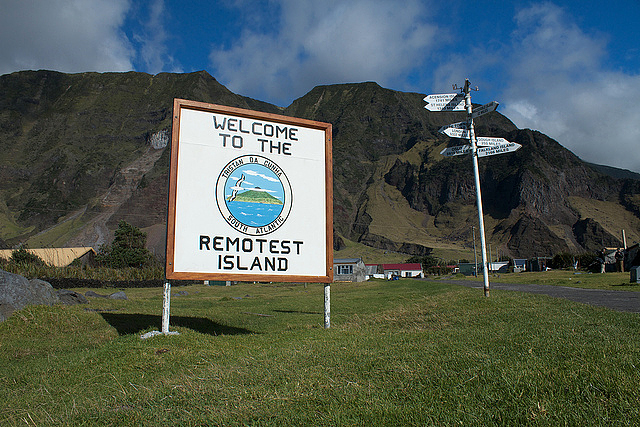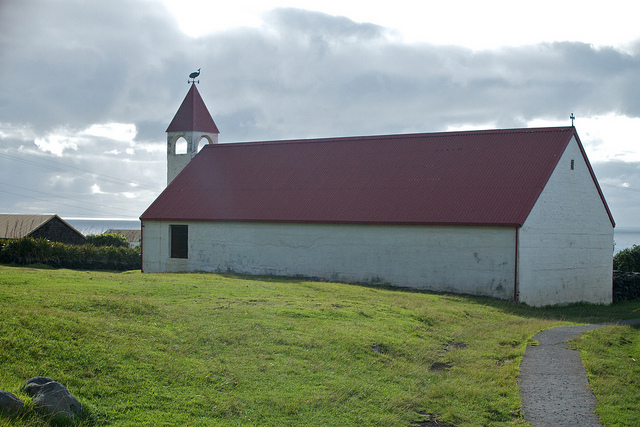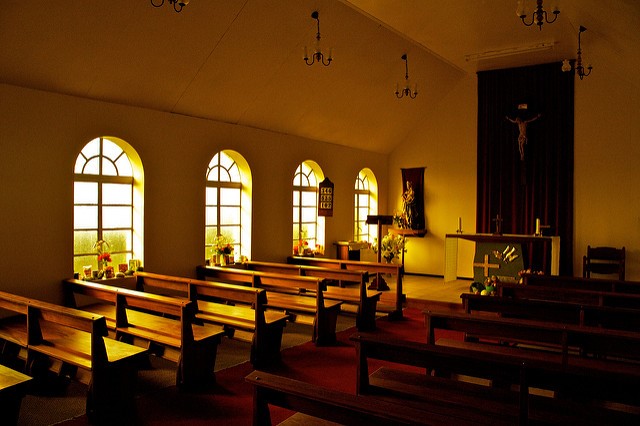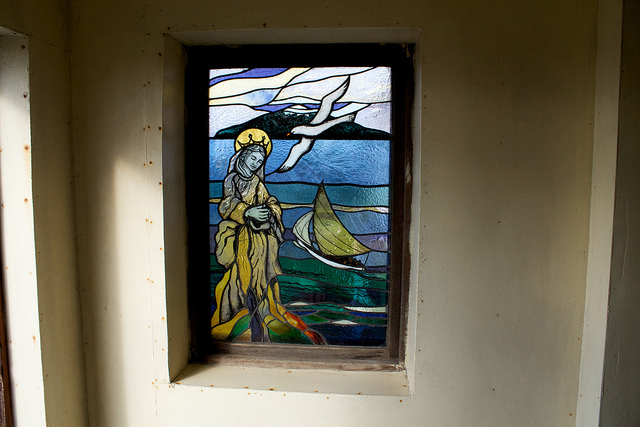If the Tristan Islanders live on the remotest inhabited island on earth as they claim, than the Roman Catholic Church there must serve the world’s most remote parish. At least that’s the reasoning expressed in a recent article about the Catholic community on the island by Hugh Allan, the administrator of the Roman Catholic diocese of the Falkland Islands, Saint Helena, Ascension Island, and Tristan da Cunha.

Allan, who was a parish priest in the English city of Chelmsford from 2008 until 2016 when he was appointed to his current position, visited the island in January and February this year. He writes that he sailed from Cape Town on the Edinburgh, a fishing vessel that only has cramped berths for 12 passengers on the lengthy sea voyage to Tristan. There is no airport on the island.
He says that the island has 263 inhabitants, one third of whom are now Catholics. It might seem like a small number of people for a priest to travel such a distance to serve, “but the kindness and deep faith of the islanders made the long voyage well worthwhile,” he writes. He focuses his article on that faith: in the 1990s, when it had been some years since a priest had traveled to Tristan, the attendance for services in the church had fallen.

So, he writes, the remaining members of the church prayed for guidance and then decided that when God answered their prayers, they would need a bigger church building to house their increasing numbers. So they went ahead and built an even larger church and their prayers were answered—attendance increased to fill the new sanctuary. The parish is normally served by three catechists; a priest visits once a year, usually in September.
Allan saw frequent evidence of the kindness, love, and respect that the Islanders give to their elderly members. When the priest visited a 102-year old lady, the oldest person on the island, she was so delighted to have him come that she put in her teeth for the occasion. He writes that outsiders could learn a lot from the Islanders, such as their ability to accept life as a gift, their concern for the welfare of others, and, most of all, their propensity to be content with the lives they have. As a priest, his conclusion is not surprising: that while the Tristan Islanders have their worries and problems, their strength comes from their faith.

In his article, Allan recounts the history of the parish, which was founded by an Irish woman named Agnes Rogers, who is remembered to this day as “Granny Aggie.” According to the history of the parish in Peter Munch’s book Crisis in Utopia, Mrs. Rogers, born Agnes Smith, came to the island with her husband in 1908. But he died and she married an islander named William Rogers. According to Allan’s account, she worked as housekeeper for the administrator of the island.
Allan writes that she was under a lot of pressure to renounce her Catholic faith and conform to the ways of the rest of the Anglican people. But she resisted and was treated very badly for her obstinacy. The prejudice was so virulent that when food rations were scarce, she was not allowed to have any. In time, she stubbornly wore down the opposition and began the current parish in her own home.

Munch writes that she attended services at the Anglican Church in the Settlement for 24 years until a visiting priest in 1932 induced her to begin the current parish in her own home. Allan elaborates by writing that the priest, L.H. Barry, reported on his visit with Aggie and that “She heard Mass and went to the Sacraments, and her joy was great and touching to see.”
In any case, the services that Aggie started in her home soon evolved into a separate parish from the Anglican majority. The ups and downs of the St. Joseph’s parish are described in somewhat differing details by Allan and Munch, but significantly, while the church community was clearly diminishing in numbers when Munch was there in the early 1960s, Allan describes it as thriving today.